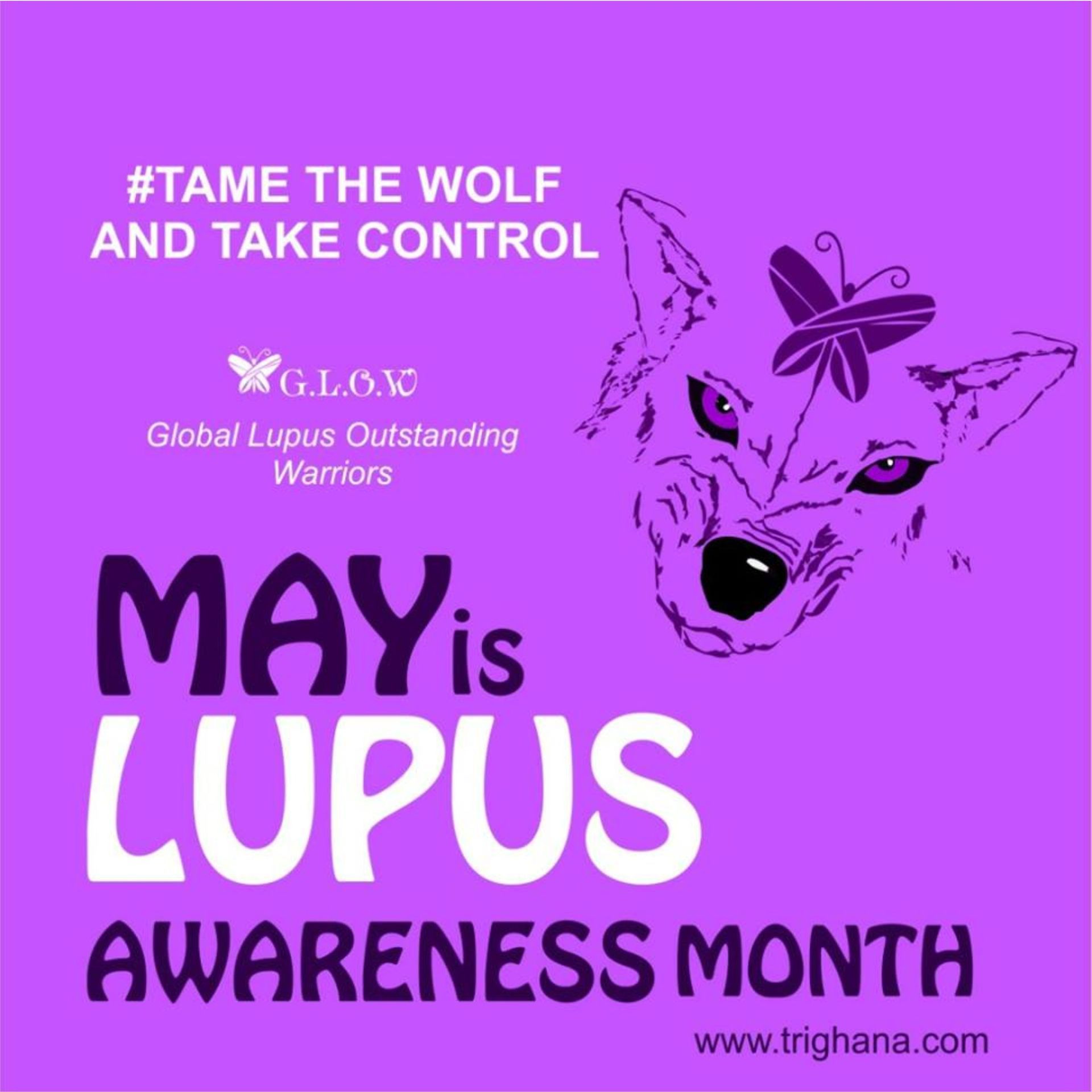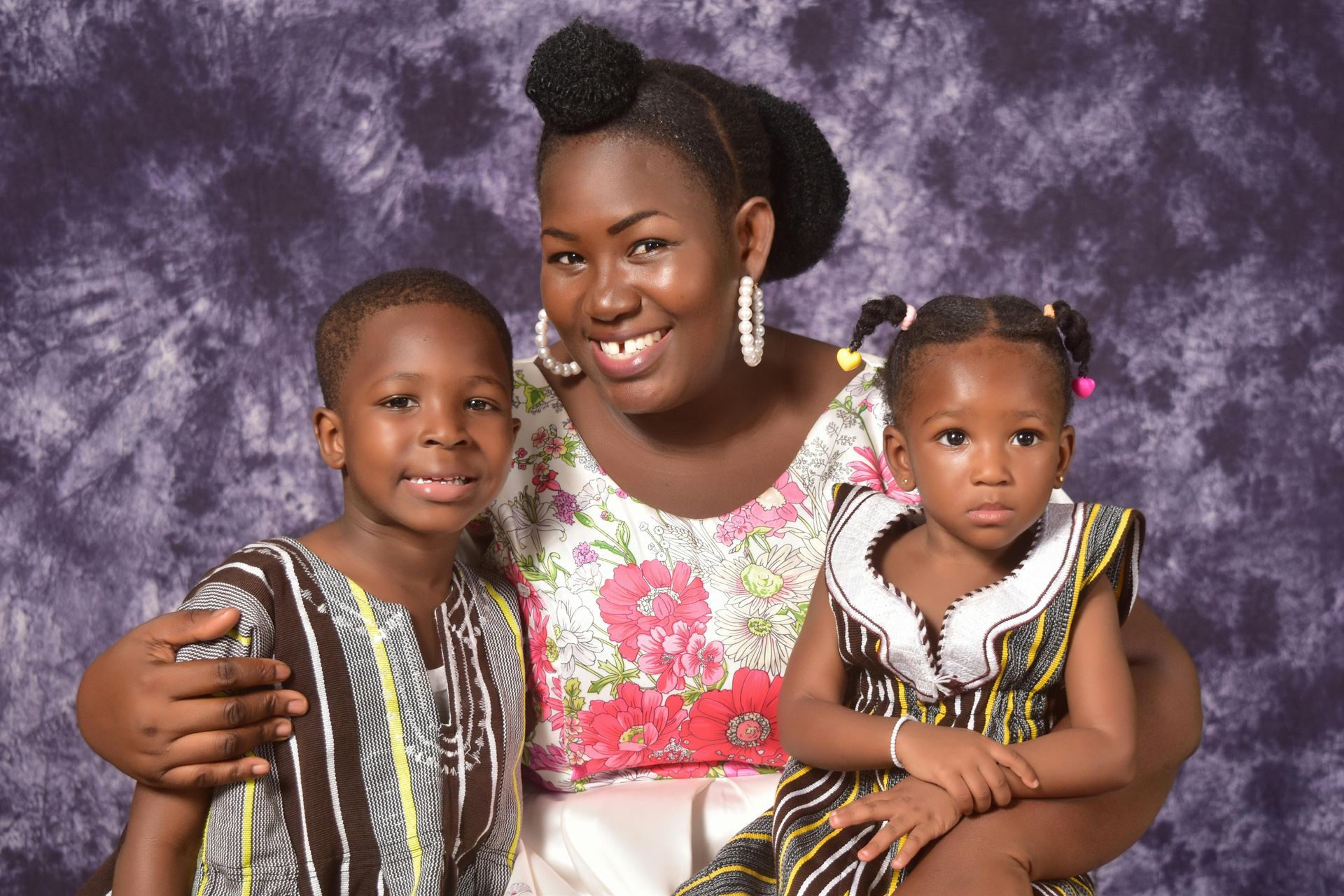LUPUS AWARENESS MONTH 2017
Lupus Awareness Month is here!
Our awareness campaign theme this year 2017 is, “TAME THE WOLF AND TAKE CONTROL’
The word ‘lupus’ originated from the Latin word ‘wolf’. It’s attributed to a 19th century physician who used it to describe rashes or scarred irritations on the skin of his patients that looked like the bite of a wolf. The wolf is considered as a ferocious animal which ravages just like lupus does.
Lupus is life – threatening, unpredictable and can damage organs in the body. As part of lupus awareness month, we share some facts about lupus so you can be informed.

LUPUS FACT 1:
Lupus is an unpredictable, chronic autoimmune disease that ravages different parts of the body.
LUPUS FACT 2:
In lupus, something goes wrong with the immune system. Our immune system is designed to protect us from diseases and infections but when you have an autoimmune disease like lupus, the immune system instead of protecting, attacks healthy cells in your body by mistake leading to inflammation. Lupus can affect any part of your body.
LUPUS FACT 3:
Ninety percent of the people who develop lupus are women, though men can also develop lupus and their disease can affect some organs more severely.
LUPUS FACT 4:
Lupus commonly develops between ages 15 and 44. However, between 10 and 20 percent of cases develop during childhood and these tend to have serious health complications.
LUPUS FACT 5:
People of African descent, Hispanics/Latinos, Asians, Pacific Islanders, and Native Americans are diagnosed with lupus two or three times more frequently than Caucasians; however, lupus can affect people of all races and ethnicities.
LUPUS FACT 6:
Lupus is not contagious and cannot be “given” to another person.
LUPUS FACT 7:
To diagnose lupus, doctors evaluate a patient’s current symptoms, lab test results, personal medical history and family medical history.
LUPUS FACT 8:
Lupus can affect any organ system of the body, including the heart, kidneys, lungs, blood, joints and skin.
LUPUS FACT 9:
The malar, or “butterfly” rash on the face is present in about one-third of people with lupus. This is a flat rash across the bridge of the nose and cheeks.
LUPUS FACT 10:
Pregnancies in lupus are considered “high risk”, but advancing technology and a better understanding of the disease have improved pregnancy outcomes.
LUPUS FACT 11:
Today, 80 percent of women with lupus symptoms that are not active can have successful pregnancies.
LUPUS FACT 12:
Lupus is not a form of arthritis, but many people with lupus do suffer from joint and/or muscle pain.
LUPUS FACT 13:
People with lupus are encouraged to engage in appropriate daily exercise to maintain muscle and bone strength, but this must be paced with rest.
LUPUS FACT 14:
People with lupus have two times the risk of developing cardiovascular disease than people without lupus.
LUPUS FACT 15:
Nearly 3 in 4 people with lupus surveyed (76 %) said fatigue limits their ability to participate in social activities.
LUPUS FACT 16:
Factors that may trigger a lupus flare include infections, ultraviolet light, stress, some medications, and some unknown environmental factors.
LUPUS FACT 17:
Many symptoms of lupus imitate those of other illnesses, and can come and go over time, making diagnosis difficult.
LUPUS FACT 18:
Based on a recent study, it takes an average of six years for people with lupus to be diagnosed from the time they first notice their symptoms.
LUPUS FACT 19:
A majority of people with lupus surveyed (63 %) report being incorrectly diagnosed at a point. Of these, more than half of them (55 percent) report seeing four or more doctors for their symptoms before being accurately diagnosed.
LUPUS FACT 20:
First degree relatives of people with lupus (parent, sibling or child) have six times higher risk of developing the disease.
LUPUS FACT 21:
Sensitivity to ultraviolet light (present in both sunlight and artificial light) affects as many as 2/3 of individuals with lupus, and may cause fever, debilitating fatigue, joint pain, rashes and other symptoms.
LUPUS FACT 22:
40% of adults with lupus and as many as 66% of all children with lupus will develop kidney complications.
LUPUS FACT 23:
In one survey, more than half (55%) of people with lupus were working part-time, intermittently or are unemployed because of lupus.
LUPUS FACT 24:
On average, the annual cost of lupus, including expenses related to treatment and loss of productivity, exceed $20,000, and can increase to $63,000 if the kidneys are involved.
LUPUS FACT 25:
People with lupus take on average nearly eight prescription medications to manage all of their medical conditions including lupus.
LUPUS FACT 26:
About half of all people with lupus will experience a serious infection during the course of their disease.
LUPUS FACT 27:
As many as 60% of people with lupus experience some type of memory problem, such as recalling names, dates and appointments or balancing a checkbook.
LUPUS FACT 28:
With current methods of therapy, 80 to 90% of people with no organ involved lupus can look forward to having the same lifespan as people without lupus.
LUPUS FACT 29:
Early detection and treatment is the key to a better health outcome and can usually lessen the progression and severity of the disease.
Living with lupus is like living with a wolf in the inside. Do we allow the wolf (lupus) to ravage our bodies or find ways of taming it?
Taming the wolf involves taking measures to ensure we keep lupus under control. Together we can make a difference by joining forces to educate lupus warriors and the public about Lupus
The Global Lupus Outstanding Warriors (GLOW) provides lupus support as a subgroup under The Rheumatology Initiative (tRi).
We invite you to support us in our Lupus Awareness-Raising Campaign!
- Share our graphics , stories and other resources we provide daily during this month of May.
- Donate 5 GHC or more via the MTN Mobile Money 0544089065 (Reference : GLOW)
- Visit our website: www.trighana.com or social media handles to know how you can support and Volunteer
Someone you know has lupus, and raising awareness may save their life!
Let's TAME THE WOLF and TAKE CONTROL!










